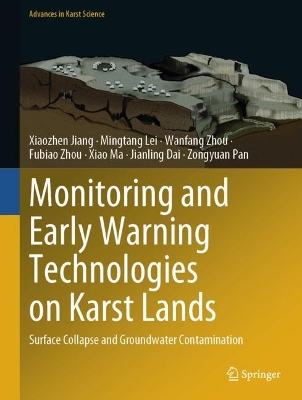Advances in Karst Science
2 total works
Atlas of Karst Collapses
by Mingtang Lei, Wanfang Zhou, Xiaozhen Jiang, Jianling Dai, and Meng Yan
This book comprehensively documents the various types of karst collapse and related conceptual site models, before discussing these collapses in terms of their impacts on engineering and the environment. Featuring over 200 real-world photos to illustrate the variety of karst collapses and their consequences, the book also provides specific methods and techniques to prevent, investigate, monitor and remediate these collapses. Decades of experience with these collapses make it clear that addressing the related hazards requires a multi-disciplinary approach that integrates geomorphology, engineering geology, hydrology, hydrogeology, biology, geophysics, geochemistry, and risk assessment.
Monitoring and Early Warning Technologies on Karst Lands
by Xiaozhen Jiang, Mingtang Lei, Wanfang Zhou, Fubiao Zhou, Xiao Ma, Jianling Dai, and Zongyuan Pan
This book compiles a broad range of monitoring and early warning technologies focused on high-resolution in-situ water quality parameters at springs and monitoring wells. The surface collapses often cause severe damage to infrastructures, properties, and loss of lives, whereas contaminated groundwater poses risks to human health and the environment. Collapses are critical in karst systems, sparsing a seventh of Earth’s land surface. Karsts are also very relevant for drinking water, yet karst represents a fourth of global drinking water. Mitigating collapses and contaminated groundwater in karst aquifers can be complicated and costly.
These parameters detect hydrodynamics, internal soil erosion, and ground deformation changes as karst collapse and pollution proxies. This book represents the most comprehensive overview of decades of research on karst collapse and groundwater contamination.
This book is of interest to researchers and policymakers.

